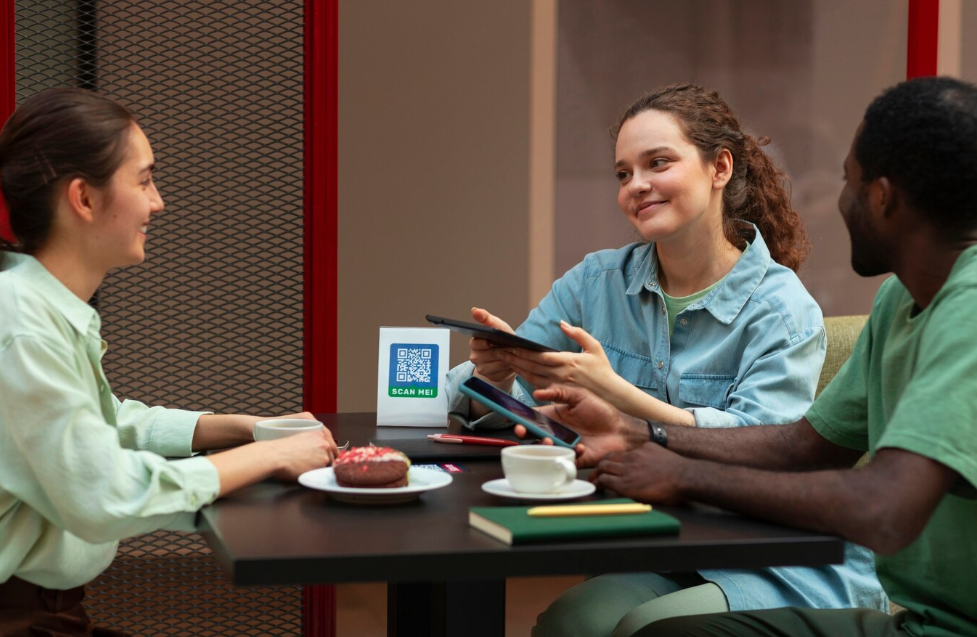Public Health Communication Strategies That Actually Drive Behavior Change
Using Social Norms to Promote Behavior Change
It’s interesting how much we’re influenced by what we think others are doing or what they approve of. In public health, we can use this to encourage positive changes through social impact marketing. It’s all about tapping into those unwritten rules that guide our actions.
Highlighting Descriptive Norms
Descriptive norms are basically what’s ‘normal’ in a given situation. If you can show people that most others are already doing something healthy, they’re more likely to jump on board. It’s like a bandwagon effect. For example, if a campaign highlights that a large percentage of people in a community are exercising regularly, it might motivate others to start exercising too.
Emphasizing Injunctive Norms
Injunctive norms are about what’s considered acceptable or unacceptable. These norms can be a strong motivator. If a public health message emphasizes that a community disapproves of a certain unhealthy behavior, it can create social pressure to change. Think of campaigns against drunk driving – they often highlight how unacceptable it is to drive under the influence.
Creating a Sense of Community and Shared Values
When people feel like they’re part of a community that values healthy behaviors, they’re more likely to adopt those behaviors themselves. It’s about creating a sense of belonging and shared identity. Using inclusive language and highlighting the benefits of healthy behaviors for the whole community can really help.
Social norms are powerful because they tap into our innate desire to fit in and be accepted. By understanding and using these norms, public health campaigns can be more effective at promoting positive behavior change. It’s not just about telling people what to do, it’s about showing them that it’s what everyone else is doing, and that it’s the right thing to do.
Leveraging Emotional Appeals in Public Health Communication
Emotional appeals? They’re not just about tugging at heartstrings. They’re a way to make public health messages stick. It’s about forging a real connection, making people actually care about the information you’re putting out there. Forget dry statistics; think about how to make people feel something.
The Power of Storytelling
Stories are powerful. They make abstract concepts real. Instead of just saying “smoking is bad,” share the story of someone struggling with lung cancer. Personal anecdotes create empathy and make the issue relatable. It’s not just data; it’s someone’s life.
Appealing to Core Emotions
Emotions drive decisions. Fear can work, but it’s not the only option. Joy, hope, even a little bit of righteous anger can be effective. The key is to understand your audience and what motivates them. What makes them tick? What are their values? Tap into that.
Utilizing Visuals and Imagery
Pictures are worth a thousand words, right? A powerful image can convey more than any statistic. Think about the impact of graphic images on cigarette packs. Visuals can evoke strong emotions and create lasting impressions. Choose images that resonate with your audience and reinforce your message. Don’t just show; make them feel.
It’s easy to get caught up in the data and forget the human element. But public health is about people. It’s about their lives, their health, and their well-being. Emotional appeals are a way to connect with them on a human level and motivate them to make positive changes.
Implementing Incentives and Rewards for Public Health
Incentives and rewards? They can seriously get people moving when it comes to public health. Think about it: a little nudge in the right direction can make a big difference. It’s all about finding what motivates people and using that to encourage healthier choices.
Offering Tangible Rewards
Okay, so tangible rewards are basically things you can touch or use. These can be super effective because, well, everyone likes getting something for their efforts. We’re talking discounts, gift cards, or even just cool swag. Imagine a campaign where you get a discount on your gym membership if you hit a certain number of workouts each month. That’s the kind of thing that can get people off the couch.
Using Recognition and Praise
Don’t underestimate the power of a pat on the back! Sometimes, all people need is a little recognition to keep going. Public praise, shout-outs on social media, or even personalized messages can make a huge difference. It’s about making people feel seen and appreciated for their efforts. Think about a community board where people who quit smoking get their names displayed. It’s a simple thing, but it can be a powerful motivator.
Applying Gamification and Competition
Gamification and competition? Now we’re talking! Turning healthy behaviors into a game can make things way more engaging. Think fitness challenges, step-counting competitions, or even just points and badges for completing healthy tasks. It’s all about making it fun and creating a sense of friendly rivalry. Leaderboards, virtual rewards, and team challenges can all add to the excitement.
Incentives aren’t just about the immediate reward; they’re about creating lasting habits. By associating positive feelings with healthy behaviors, we can help people make long-term changes that benefit their health and well-being.
Grounded in Research, Guided by Community: Best Practices in Health Communication
It’s easy to think that public health communication is just about shouting facts from the rooftops. But if you want people to actually listen and change their behavior, you’ve got to dig a little deeper. It starts with solid research, but it absolutely must be guided by the community you’re trying to reach. Data is important, but it’s not the whole story.
Understanding Community Needs Through Research
Before you even think about crafting a message, you need to understand what’s going on in the community. What are the biggest health concerns? Who do people trust for information? What are the barriers to better health? Research helps you answer these questions. It’s about identifying trends, uncovering disparities, and understanding the context behind health behaviors.
For example, a study might reveal that a particular community has a high rate of diabetes but limited access to healthy food options. Or it might show that people are hesitant to get vaccinated because of misinformation circulating online. This kind of information is crucial for developing effective communication strategies.
Tailoring Messages for Specific Audiences
Once you have a good understanding of the community, you can start tailoring your messages. This means considering everything from language and imagery to communication channels and cultural values. A one-size-fits-all approach simply won’t work. You need to speak directly to the people you’re trying to reach, in a way that resonates with them.
Here’s a quick example:
| Audience Segment | Preferred Communication Channel | Key Message |
| Young Adults | Social Media | Short, engaging videos with relatable influencers |
| Older Adults | Community Newspapers | Informative articles with practical tips |
| Spanish Speakers | Spanish-Language Radio | Culturally relevant stories and testimonials |
Building Trust Through Relevant Communication
Ultimately, the goal of public health communication is to build trust. People are more likely to listen to messages that come from sources they trust and that are relevant to their lives. This means working with community leaders, healthcare providers, and other trusted messengers to deliver your message. It also means being transparent and honest about the challenges and uncertainties involved.
When health information feels complicated or out of touch, people tune it out. By incorporating trusted messengers and local touchpoints, public health education efforts can strengthen community trust and increase engagement. At its best, public health communication doesn’t just share information—it builds trust, empowers action, and reflects the voices of the communities it serves.
Here are some ways to build trust:
- Partner with local organizations.
- Use plain language and avoid jargon.
- Be responsive to community concerns.
- Share success stories and testimonials.
Meeting Complexity with Compassion: Strategies for Evolving Campaigns
Public health campaigns are rarely straightforward. You’ll find that each one comes with its own unique set of problems. These problems are often shaped by how complex the health issue is, how diverse the communities involved are, and how quickly social media changes. To deal with all this, you need to be flexible and understanding.
Adapting Campaign Strategies with Flexibility
Things change, and your campaign needs to change with them. New research might come out, or the community’s needs might shift. Being ready to change your approach is super important. It’s like when you’re driving and need to take a detour because of construction. You can’t just keep going straight; you have to adjust.
Prioritizing Empathy in Message Development
It’s not enough to know what the barriers are; you need to understand why they exist. Maybe people don’t have access to good healthcare, or maybe they don’t trust the information they’re getting. When you create campaigns with empathy, you’re better able to address the real-world situations people face. It’s about putting yourself in their shoes and seeing things from their point of view.
Listening to Community Feedback and Insights
Listening is key. You need to hear what the community is saying. This means getting feedback, paying attention to social media, and talking to people on the ground. This helps you create messages that are relevant, accurate, and respectful. It’s like having a conversation instead of just talking at people.
Campaigns that listen and change with their audiences are the ones that make a real difference. It’s about being willing to learn and grow, and always putting the community first.
Putting It All Together: Public Health Communication That Moves People Forward
As we’ve seen, effective public health communication isn’t just about pushing out information. It’s about connecting with people where they are, understanding their lives, and building trust. The most successful campaigns blend research with empathy, strategy with the ability to change, and messages with real meaning.
Combining Research with Empathy
It’s not enough to just have the data. You need to understand the community you’re trying to reach. What are their concerns? Who do they trust? What kind of language resonates with them? Research gives you a foundation, but empathy helps you build something that actually connects with people. For example, a campaign about heart health needs to consider the real-world factors that affect people’s choices, like access to healthy food and safe places to exercise.
Integrating Strategy with Flexibility
Things change. New information comes out, community needs shift, and what worked last year might not work today. You need a solid plan, but you also need to be ready to adapt. That means listening to feedback, monitoring how your message is being received, and being willing to adjust your approach as needed.
Delivering Messaging with Meaning
Ultimately, public health communication is about more than just getting people to do something. It’s about empowering them to make informed decisions about their health and well-being. Your message should be clear, relevant, and respectful. It should reflect the values and experiences of the community you’re trying to reach. When you do that, you’re not just communicating, you’re building trust and creating lasting change.
Effective public health communication requires a commitment to understanding the audience, adapting to changing circumstances, and delivering messages that are both informative and meaningful. It’s a process of continuous learning and improvement, guided by research, empathy, and a genuine desire to improve the health and well-being of the community.
Frequently Asked Questions
What’s the best way to make a public health message that works?
The best way to create a public health message is to really know who you’re talking to. Then, use smart methods like showing what most people do (social norms), touching on feelings (emotional appeals), and giving out prizes or rewards (incentives).
How can I tell if a public health message is doing its job?
You can tell if a public health message is working by looking at things like how many people started doing the healthy thing you wanted, how many people saw the message, and if people’s habits actually changed over time.
Can public health messages be made for a specific group of people?
Yes, absolutely! You can make public health messages special for a certain group of people. Use words and pictures that make sense to them, and show how healthy habits can help their whole community.
Why are feelings important in public health messages?
Feelings are super important in public health messages. When you connect with people’s emotions, it can make them want to change their habits. Stories, strong feelings, and good pictures can all help with this.
What makes a public health message good and trustworthy?
Public health messages need to be clear, easy to understand, and trustworthy. They should also be honest and respect the people they’re trying to reach. It’s about building a connection.
How important is it to update public health messages over time?
It’s super important to keep learning and changing your public health messages. As new information comes out or people’s needs change, your messages should change too. Staying flexible helps them stay helpful.





